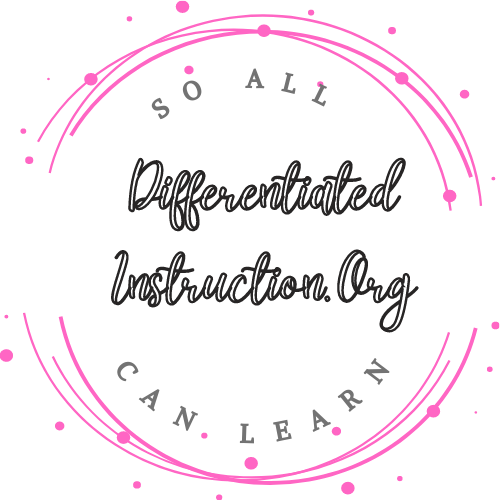Differentiated Instruction or DI, is an academic term which simply means having classroom lessons from which all students can learn, regardless of their current knowledge base.
DI is a new idea, having originated around the turn of the 21st century. It contradicts the idea of traditional American instruction, in which it was considered enough for the teacher to put the lessons out, track which students mastered the material and allow them to move on, and fail those who didn’t. This system was considered sufficient because repeating a subject or a year was an option, because there were other schools a student could chose to attend if one didn’t work, and because school completion, as such, was not an absolute requirement for functioning as an adult.
In the 21st century, those options no longer really exist. The average public elementary school in the United States draws its students from the local neighborhood, and because of cost and transportation concerns, the average family has only the local school. They may move to another house to access a different school, but the rules of our country’s school boards – where trying to register your student outside of your neighborhood could actually be considered illegal – mean that parents rely on the local school, the local classroom, and the local teacher.
If you’re the teacher of record, then, you are the first line of defense against student ignorance, poor performance, and failure. You are also your students best hope for success, and joy, and being at home in the world. You are their hope. Differentiating instruction, then, is a goal that matches teacher responsibility with student need.
And sometimes that’s not an easy position to be in. How can you be that person to so many different students? Because sometimes the distance from the highest reading ability to the lowest in your elementary classroom could be two or three years. Or more.
This brings us to DI. The goal is to create lessons that all students access, regardless of whether the student is on level, above level, or behind.
Some seem to believe that DI means small groups and pull-out intervention. But many teachers just want to do things in a simple way. I understand and I do too. That’s why I will argue that DI, at its best, means designing lessons that naturally differentiate themselves.
You don’t have to create a kind of “three ring circus” classroom where there are three different lessons going on simultaneously. I have always been fascinated by the whole group DI – the writing, book report, art assignment, class discussion, etc – that has the ability to drive the class’s learning and the classroom community—without demanding that the teacher perform superhuman teaching tasks, or bi-location, where the same person is in two places at once.
I want to create a place to discuss the everyday teacher’s efforts to meet all the students where they are, without exhausting herself or anyone else, day to day. That’s what I want this website to be: A resource for creating the differentiated elementary classroom. I believe and hope such a resource could apply to almost every classroom in America.
I invite you, the teacher-reader, to come along on this journey and work to create that type of environment for your class.

Pingback: How To: Differentiate Instruction with Reading Comprehension Passages - Differentiated Instruction